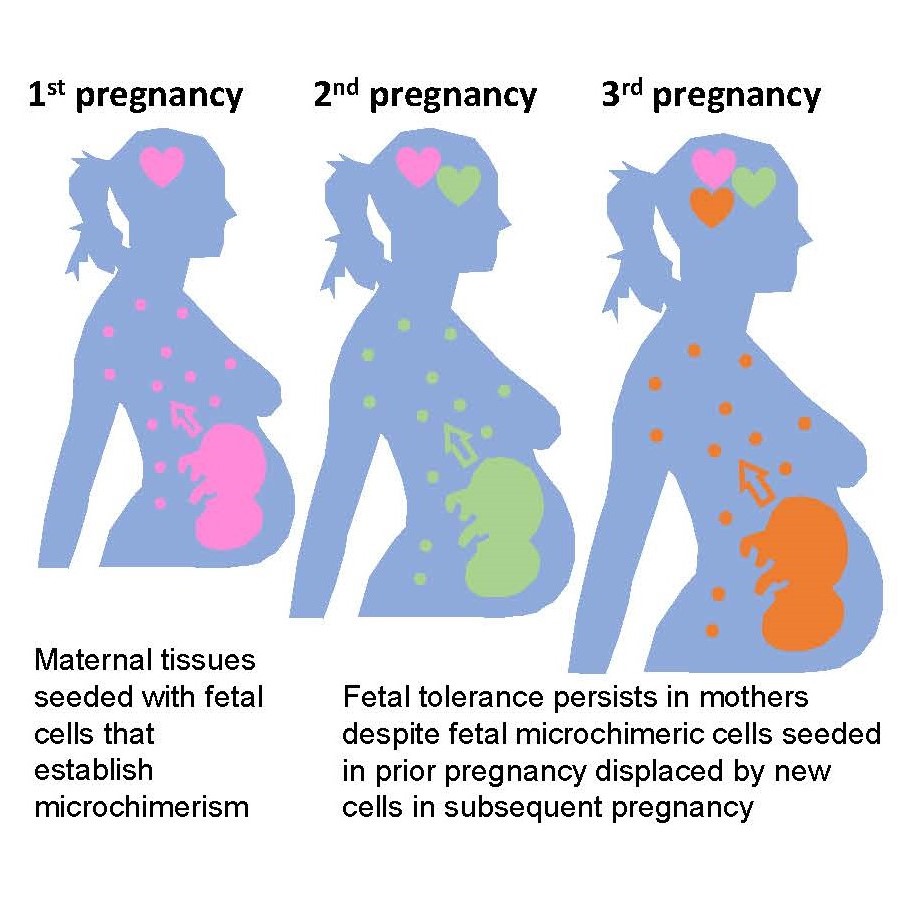
During pregnancy, a subtle yet profound biological phenomenon occurs—fetal cells migrate into the mother’s body, embedding themselves in organs such as the heart, liver, brain, and more. These cells may linger for decades, possibly influencing the mother’s health and physiology in ways science is only beginning to uncover.

Throughout pregnancy, a remarkable exchange unfolds between mother and fetus—one that extends far beyond nutrition and immunity. Fetal cells, originating from the developing embryo, can cross the placental boundary and embed themselves in the mother’s tissues, including the heart, lungs, liver, kidneys, and even the brain. This phenomenon, known as microchimerism, may leave a lasting imprint on maternal biology, potentially altering her health for years, if not a lifetime.
Microchimerism refers to the presence of a small population of genetically distinct cells within an individual. It is believed to affect all individuals who have experienced pregnancy, even in its earliest stages. Moreover, this cellular exchange is not one-sided. While fetal cells migrate into the mother, a smaller quantity of maternal cells also makes its way into the fetus, where they can remain well into adulthood.

These cellular transfers suggest that genetic material from multiple generations might coexist within a single body. According to emerging theories, one’s biological makeup may include cellular remnants not only from offspring but potentially from siblings and previous generations. For example, an individual might unknowingly carry cells from their older siblings or their maternal grandmother. This concept—being a living mosaic composed of familial fragments—redefines traditional understandings of genetic individuality.

Despite their scarcity, these fetal cells may be far from inert. Some scientists have questioned whether their presence is significant, noting their sparse and sporadic distribution. Yet others argue that their rarity does not preclude influence. These cells are genetically unique, and their presence in vital organs suggests a potential role in modulating immune responses, influencing the outcome of future pregnancies, and possibly affecting vulnerability to autoimmune conditions or infections. Some researchers have even speculated about connections between microchimerism and behavior.
The precise implications of microchimeric cells remain a subject of ongoing investigation, with viewpoints ranging from skeptical to enthusiastic. Nevertheless, if current hypotheses prove correct, these intergenerational cellular legacies may be among the most overlooked yet influential contributors to human development and maternal health. They may subtly sculpt biological systems, operating silently and persistently across a woman’s life.
What emerges from this research is a vision of human biology not as isolated or static, but as dynamic and deeply interwoven with familial past and future. In this light, every person who has carried a child may, quite literally, carry pieces of their family’s history within them.
Source:
Wu, Katherine J. (2024). “The Cells That Stay with Moms for Life.” The Atlantic. https://theatln.tc/qozjIdje
